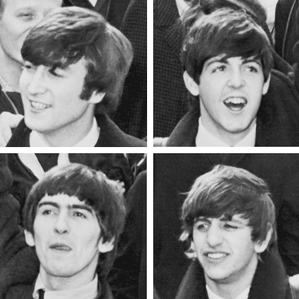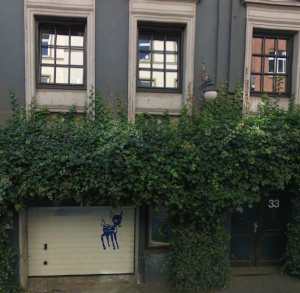 There are some rites of passage that have become elevated to near ‘parable’ status in popular culture. There is Tom Sawyer cajoling and convincing his neighbors to paint the fence for him. There is Luke Skywalker’s transformation from apprentice moisture farmer into a Jedi. And then there are the Beatles stints in Hamburg, Germany during the early 60’s…
There are some rites of passage that have become elevated to near ‘parable’ status in popular culture. There is Tom Sawyer cajoling and convincing his neighbors to paint the fence for him. There is Luke Skywalker’s transformation from apprentice moisture farmer into a Jedi. And then there are the Beatles stints in Hamburg, Germany during the early 60’s…
A significant amount of copy has already been written about this seminal period in the legendary band’s career. Macolm Gladwell focused on this era for a portion of his book, Outliers. The youth of the band, the squalid conditions, the unique culture of the St. Pauli quarter of Hamburg at that time, and the nearly super-human schedule of performances have all contributed to making the Hamburg performances nearly mythological in rock and roll lore. Popturf user elvis_crabs has been good enough to contribute a number of sites relating to the Beatles in Hamburg.
The formation of the original Beatles lineup in Liverpool is an interesting story, and one that we will save for a future blog entry. However, there it is important to incorporate a few specific locations from that city. The Jacaranda Club, named after an exotic plant species, is a coffee shop that was opened by Alan Williams in 1957. Because of its proximity to the Liverpool Institute (Paul McCartney) and the Liverpool Art College (John Lennon and Stuart Sutcliffe), members of the Beatles would hang out there. At one point, Williams hired Lennon and Sutcliffe to do a mural in the women’s restroom. The Beatles would play gigs here, and in May of 1960, Williams started promoting shows for them.
Williams was also the manager of Derry and the Seniors, a band he had sent to play in Hamburg. The success of that project led him to consider other bands for Hamburg venues. After two others did not work out, he asked the Beatles to do it. They needed a drummer, and Harrison suggested Pete Best after seeing him play at the Casbah Coffee Club which was owned by Monica Best, Pete’s mother. Best agreed to join the band.
In the early 60’s, Hamburg had grown out of the rubble of World War II. The city had been the third largest seaport in Germany, before it was leveled by bombing raids during the war. By the 1960s, it had experienced a resurgence, and the city had gained a reputation for vice and crime. Prostitutes, strippers, sailors, drug addicts, and gamblers were the prominent fixtures of the St. Pauli district.
 The Beatles arrived at the Indra Club early in the morning of August 17, 1960. The club was closed, so a neighbor opened it up and let the Beatles sleep on the red leather alcoves inside the bar. They played the same club that night. Bruno Koschmider, who owned the Indra Club and the Kaiserkeller, also owned a movie (porn) theater named the Bambi Kino. The Beatles slept in the cold bare storage room behind the screen at the Bambi Kino, using water from the urinal for rinsing and shaving.
The Beatles arrived at the Indra Club early in the morning of August 17, 1960. The club was closed, so a neighbor opened it up and let the Beatles sleep on the red leather alcoves inside the bar. They played the same club that night. Bruno Koschmider, who owned the Indra Club and the Kaiserkeller, also owned a movie (porn) theater named the Bambi Kino. The Beatles slept in the cold bare storage room behind the screen at the Bambi Kino, using water from the urinal for rinsing and shaving.
The Indra Club soon closed due to noise complaints, so the Beatles started playing the Kaiserkeller on October 4, 1960. They would play for more than four hours a night, seven days a week. Their performances continually improved because of the intense schedule. The music was loud and wild, and it started to gain them a reputation.
On October 17, 1960, Williams arranged a recording session for Lou Walters of the Hurricanes, and booked a space at Akustik Studio on the fifth floor of the Klockmann-House. He needed a backing band, so the Beatles played on the recording. The Beatles drummer, Pete Best, was buying drumsticks, so Ringo Starr of the Hurricanes sat in on drums. This is the first recording of the future Beatles line-up. They recorded the songs “Fever”, “September Song” and “Summertime”.
At the end of October 1960, the Beatles were offered a spot performing at the Top Ten Club with a better P.A, more money, and a slightly better place to sleep. When they began performing at the Top Ten Club, it broke the former contract with Koschmider. He responded by reporting Harrison to the police for working while underage (he was 17 at the time). Harrison was deported.
In retaliation, McCartney and Best went to their former quarters at the Bambi Kino. They nailed a condom to the wall and set it on fire. Koschmider contacted the police for arson, and the duo was brought to the Davidwache police station. They were deported a short time later. With the majority of the group deported, Lennon departed shortly after, while Sutcliffe remained with his German girlfriend, Astrid Kirchherr, until returning to Liverpool in January of 1961.
After Harrison turned 18, the group went back to Hamburg to play the Top Ten Club from April 1 to July 1, 1961. The owner of the club paid the deportation fees from McCartney and Sutcliffe from the last trip to placate the authorities. During this period, Stu Sutcliffe left the band to study art at the Hamburg College of Art and live with his girlfriend. The group had enough money to go shopping and buy leather pants, cowboy boots, and jeans at local shops.
On June 22, 1961, the Beatles acted as the backing band for Tony Sheridan at the Friedrich-Ebert-Halle in Harburg-Hamburg on the single “My Bonnie.” This recording would go on be instrumental in getting the attention of manager Brian Epstein.
Their third trip to Hamburg was from April 13 to May 31, 1962. Upon arriving at the airport on April 13, Astrid Kirchherr informed the Beatles that Stu Sutcliffe had died April 10, 1962 from a brain hemorrhage.
The next two trips to Hamburg were booked at the Star-Club from Nov. 1-14, 1962 (when they stayed at the Hotel Germania) and Dec. 18-31 (when they stayed at the Hotel Pacific). Their living conditions had considerably improved since their initial trip, and their final Star-Club performance was recorded and released as the album “The Beatles: Live! at the Star-Club in Hamburg, Germany; 1962” in 1977.
 The Hamburg experiences were pivotal for creating a well-honed group of musicians, and it came at a period of the Beatles lives that was transformative. As Lennon later said: “I might have been born in Liverpool – but I grew up in Hamburg.”
The Hamburg experiences were pivotal for creating a well-honed group of musicians, and it came at a period of the Beatles lives that was transformative. As Lennon later said: “I might have been born in Liverpool – but I grew up in Hamburg.”
There is a plaza with sculptures that commemorates the Beatles time in Hamburg at the corner of Reeperbahn and Große Freiheit called the Beatles-Platz. Nearby, there is a newer museum called the Beatlemania Hamburg. Although Hamburg may have lost some of the edge that existed in the 1960s, there are still a variety of landmarks that celebrate the crucible that Hamburg was to the Beatles.
